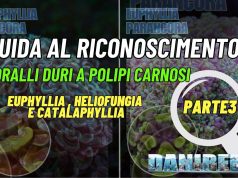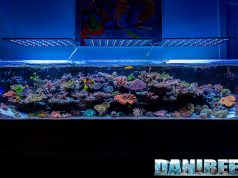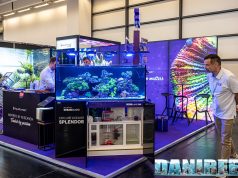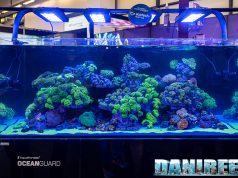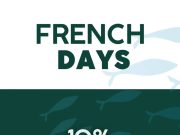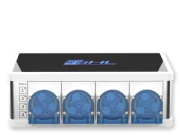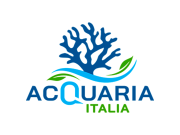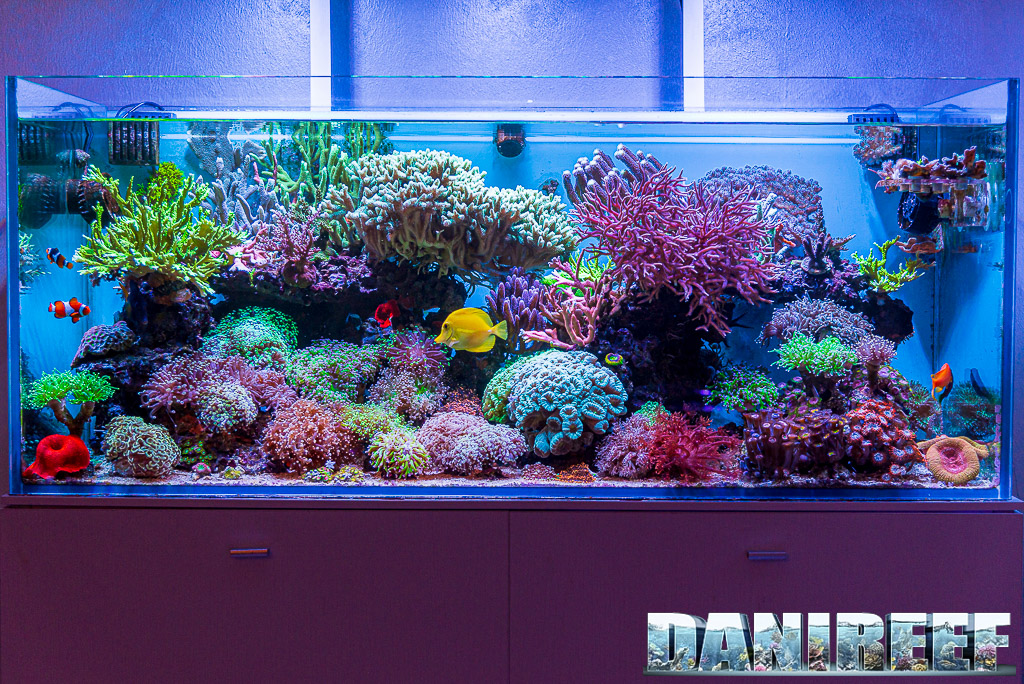
We recently had the opportunity to visit our friend Andrea Minnella and his wonderful aquarium, overflowing with corals and especially Euphyllia.
This article is also available in: Italiano
Andrea lives in Milan (Italy), or rather in the Milanese hinterland, specifically in Pieve Emanuele, and Matteo Fusco and I went to document this magnificent corner of nature as best we could. Andrea’s aquarium is very very special, because for his first marine aquarium, coming from the world of freshwater aquariums, he opted for a maximum-saving technique. That is, all excellent technique, but almost all second-hand. All to achieve a very good result, and I must say that his choices, along with his obvious blue thumb, have paid off in many ways.
The first thing that jumps out at you, looking at this aquarium, is the absolute harmony of the whole, the disproportionate number of Euphyllia and corals of extremely generous size. But before we leave the floor to Andrea to better illustrate his aquarium, let’s see our video together.
Euphyllia’s marine aquarium video by Andrea Minnella
We interviewed Andrea in front of her aquarium, which we captured in every detail. Definitely a must-see video to see the beautiful movement of the Euphyllia, and before you continue reading. As usual, the footage was shot in 4K, so all you have to do is enlarge the video to full screen, perhaps on a nice TV even a 65-inch one, and enjoy. And don’t forget to let us know what you think of the video.
Andrea’s aquarium is a 300-liter marine aquarium with standard measurements of 120x50x50h.
The history of the aquarium
The aquarium began with an attached refugium, but soon the function of the refugium became that of a second aquarium. Basically a nano reef that benefits from the stability and technique of the larger aquarium. To make it stand out better, a window was created in the cabinet that thus draws attention to itself. All because the aquarium never needed a refugium to lower pollutants, and since it was impossible for Andrea to expand at home with a larger aquarium, the route of a second marine aquarium connected to the first one was chosen.
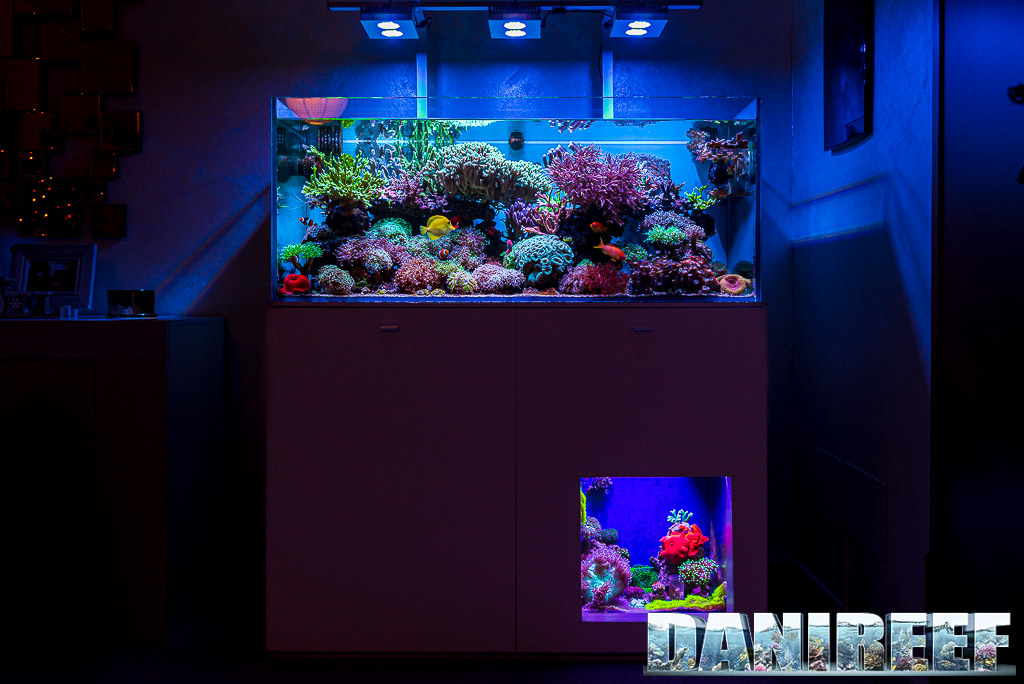
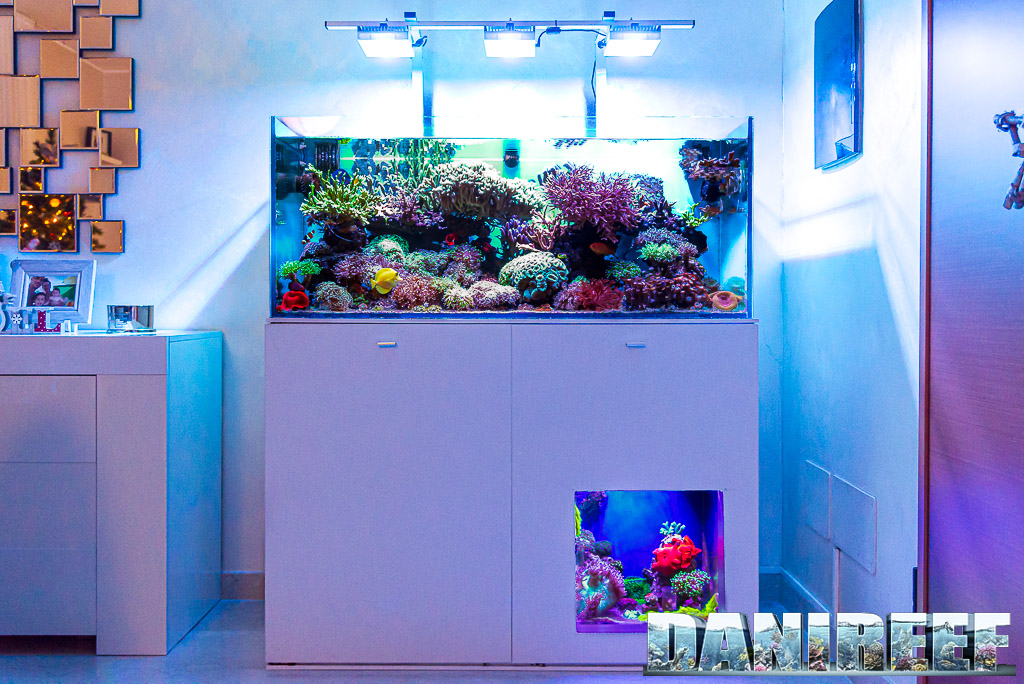
The result is a spectacle within a spectacle. Looking at the aquarium from the front, one does not know what to look at first. A solution that is not original because we have seen it before, but here it takes on a truly spectacular contour. Also because the nanoreef is extremely colorful, with a clever choice of animals housed. We like it, and we like it a lot.
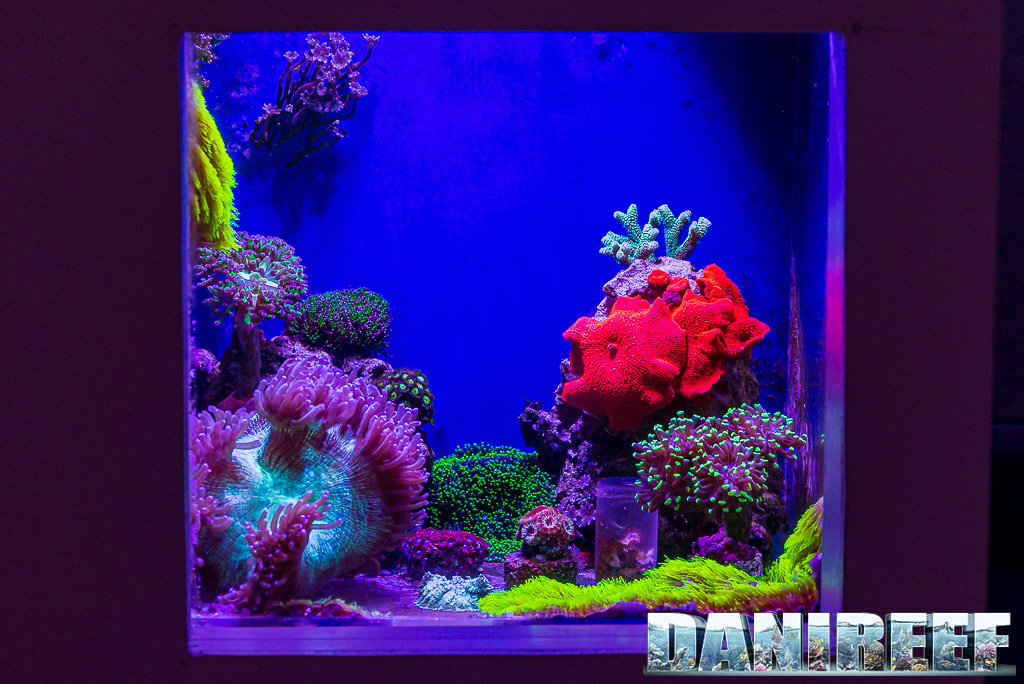
This is Andrea’s first marine aquarium, although he has had many fresh aquariums in the past, even as a young boy. Aquariums that were perhaps unpretentious, as he tells us, but that made him want to invest in the marine side of things. And we have to say that the whole thing turned out really well for him.
Andrea Minnella’s love for Euphyllia.
Impossible not to see the huge number of Euphyllia housed in the aquarium. Beautiful both because they are of different species and because they show all possible colorations of the varieties of these animals. Very difficult not to be enchanted by them. And if you were to watch the video you would find yourself in some absolutely crazy glimpses.
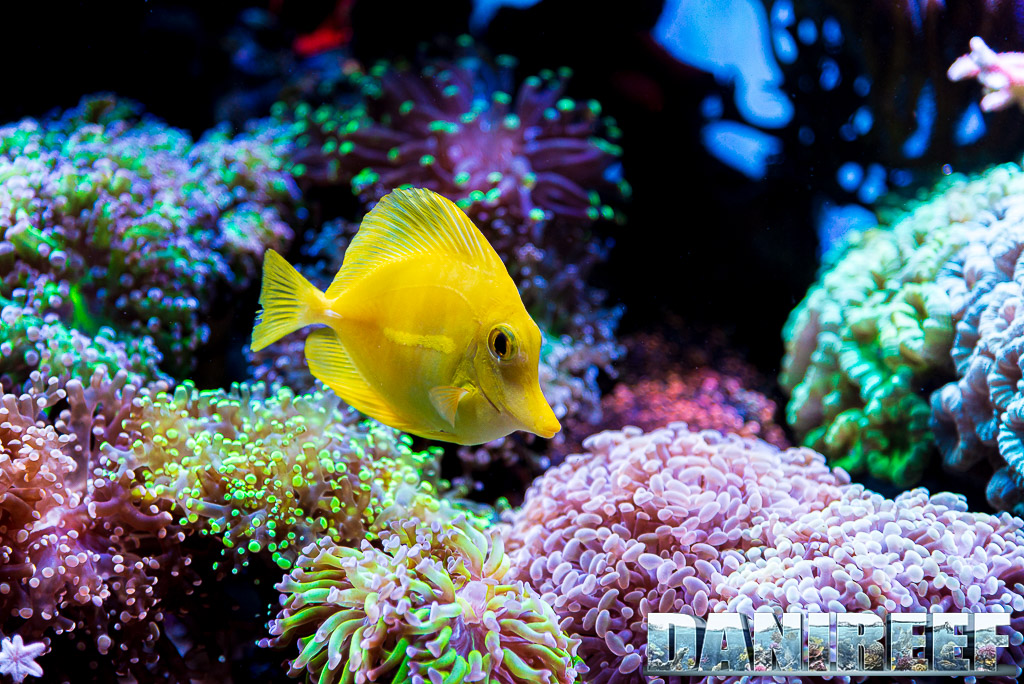
Andrea Minnella not only confirms his unconditional love for this type of LPS coral, but also tells us he particularly likes it when Euphyllia are very different and very close together. We can only agree with him. By the way, in the aquarium we range from Euphyllia glabrescens to parancora, from ancora to divisa. In short you can find everything there and with so many different colorations
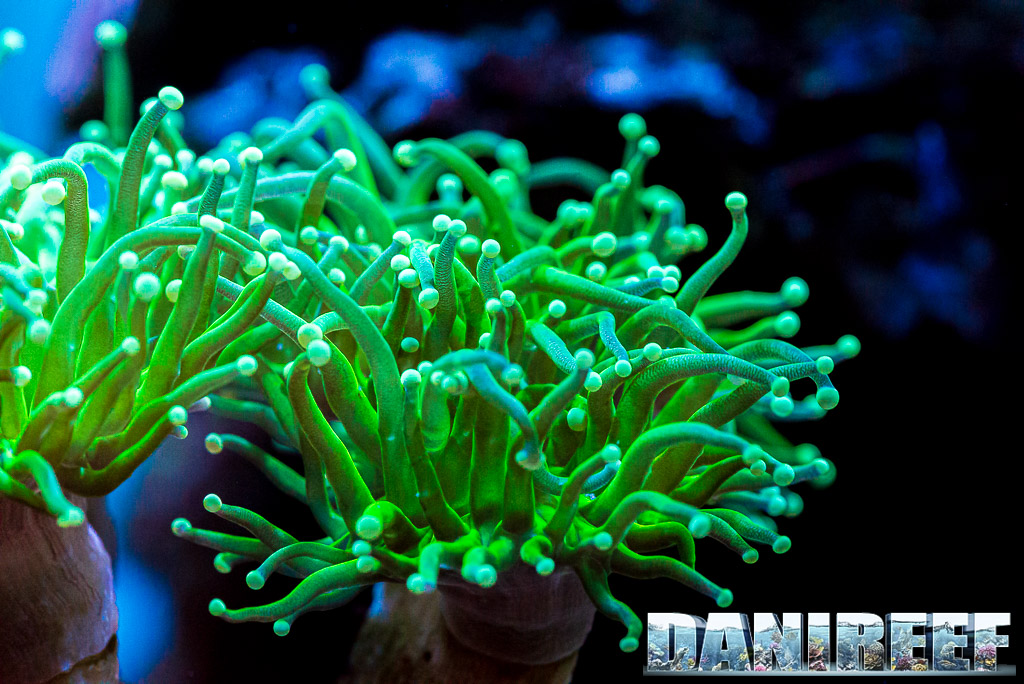
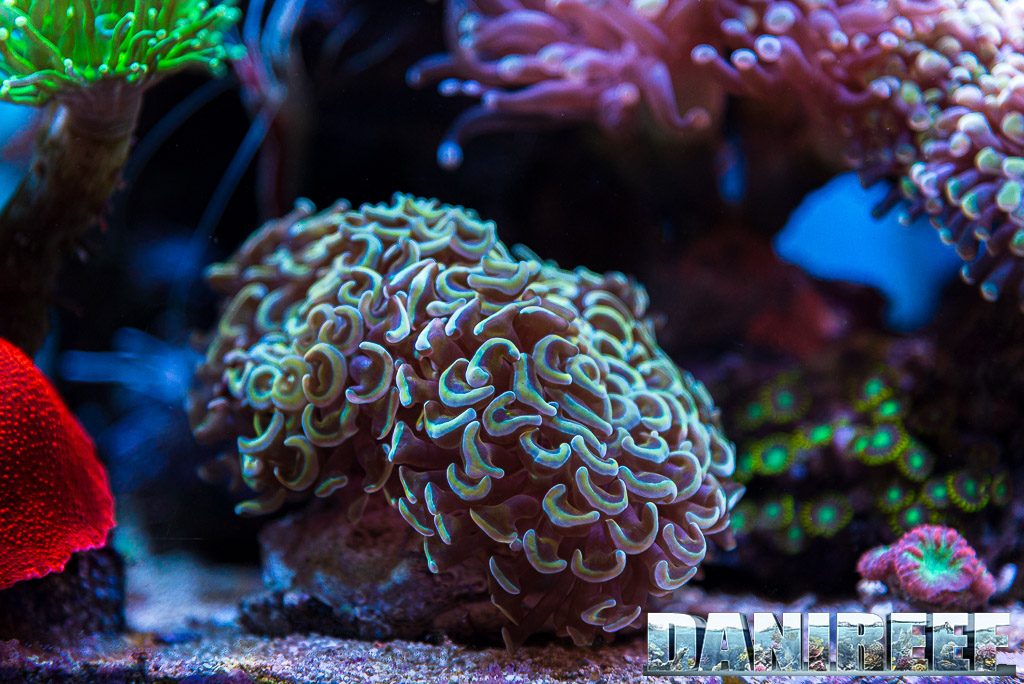
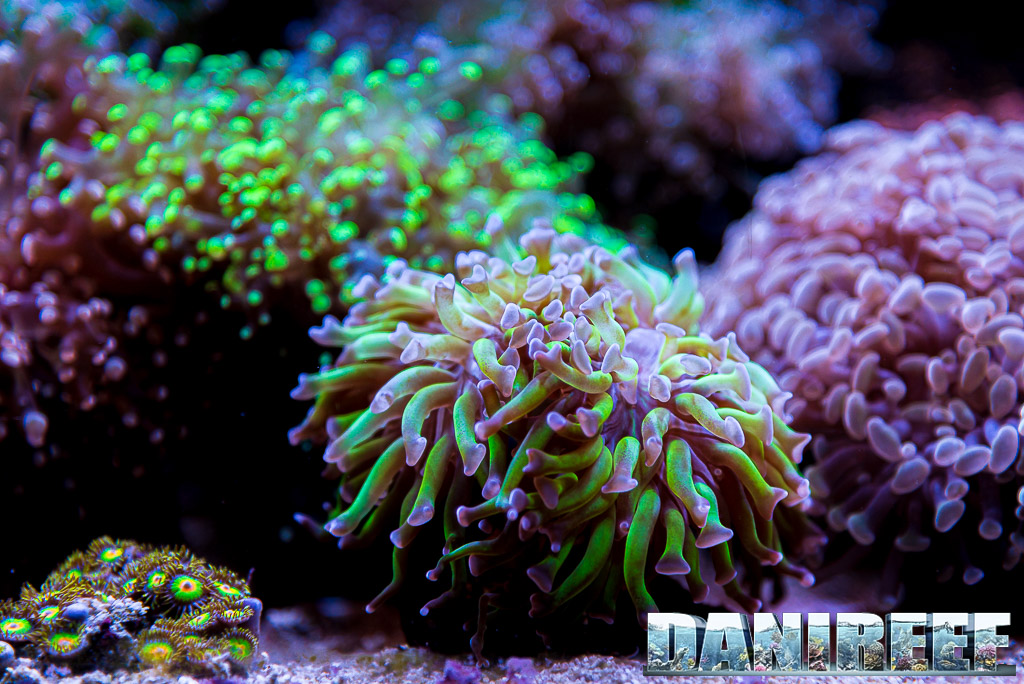
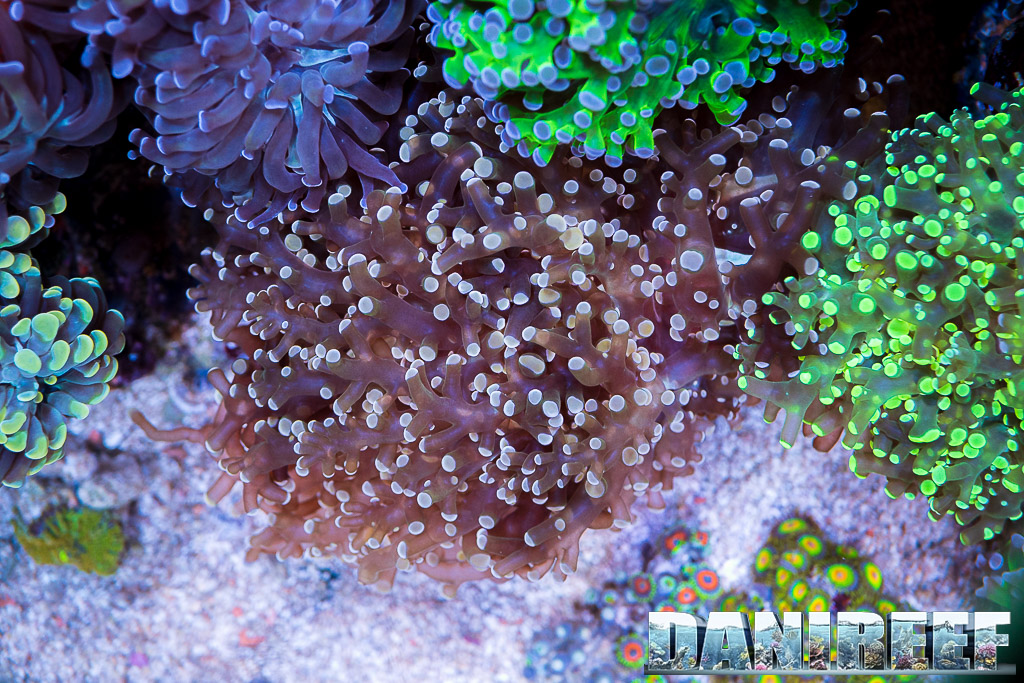
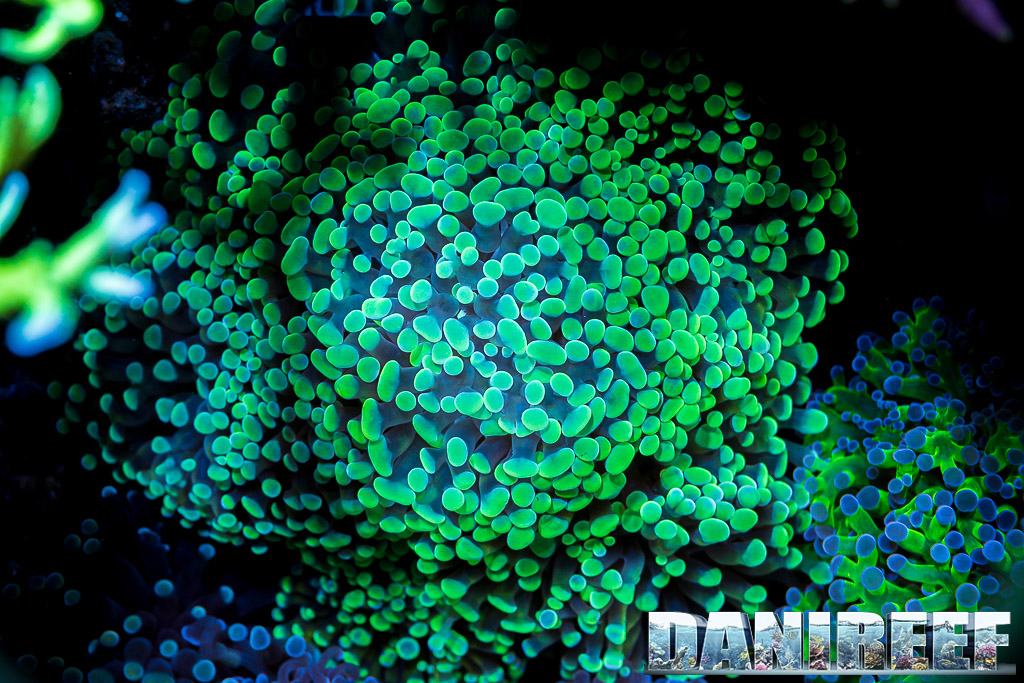
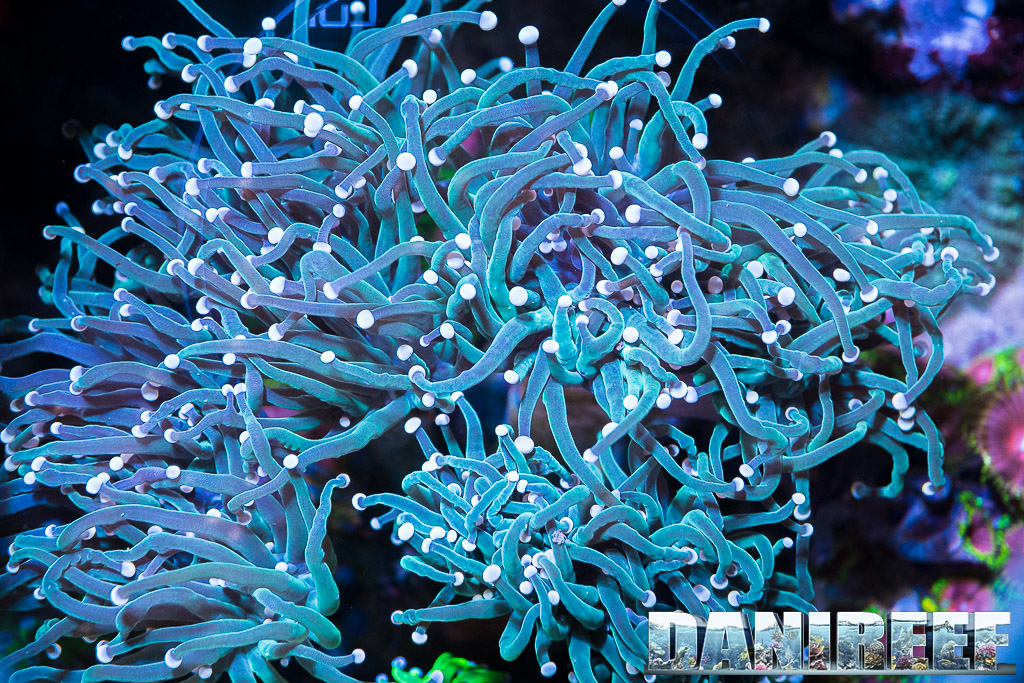
Not to mention the details of some of them.
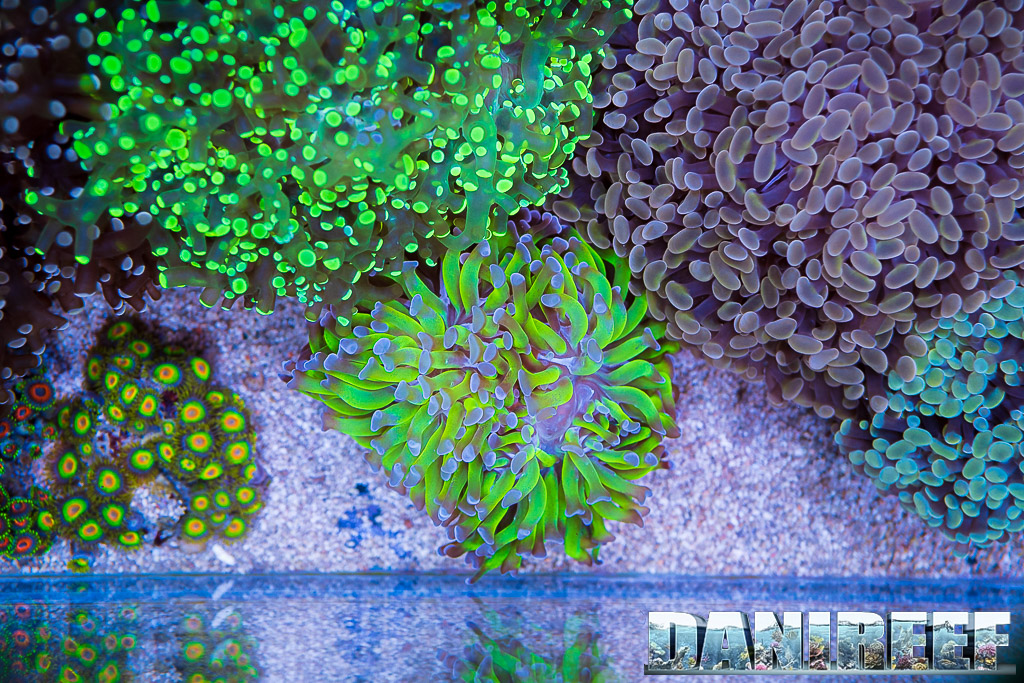
But this is not the end of the story, for there are other special corals such as Goniopora, as well as Montipora and Stylophora, not to mention Seriatopora and Acropora. All colorful corals with great scenic impact, but with crazy harmony among them. I’m sure Andrea in his former life must have been a Zen master, so neat and colorful does his tank appear.
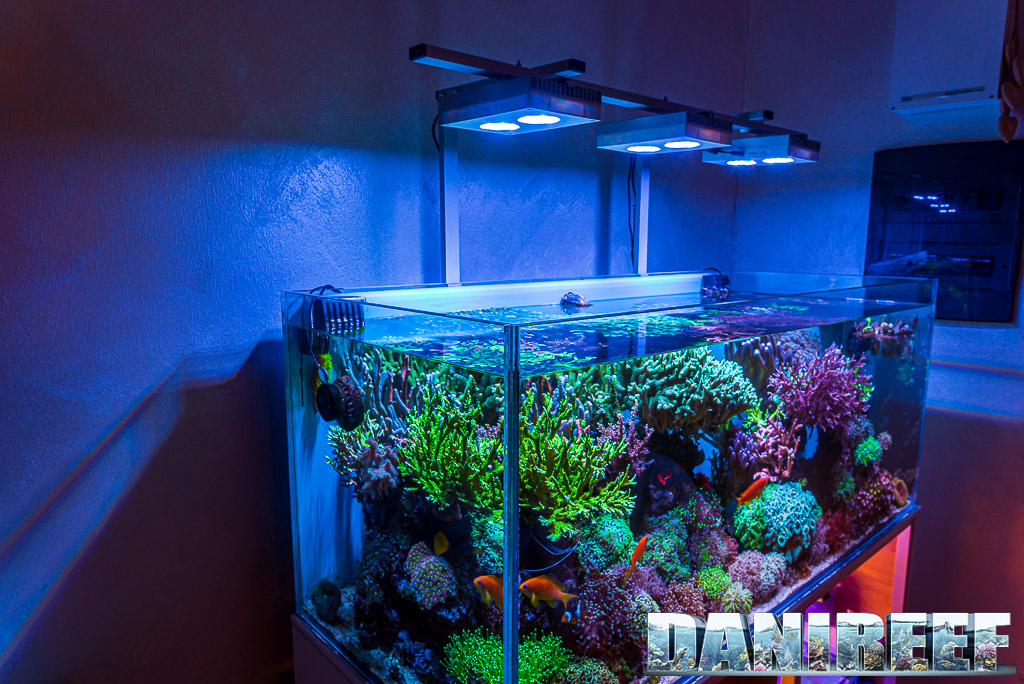
Andrea Minnella’s marine aquarium technique
According to Andrea, his aquarium was born with a rather basic technique, although we are not really sure that it can be called such. As we said, the aquarium has a capacity of 300 liters, with dimensions of 120×50 with a height of 50 cm. Classic dimensions that never clash. The aquarium has as many as 2 XAqua drains for optimal sump tank exchange and never risk clogging.
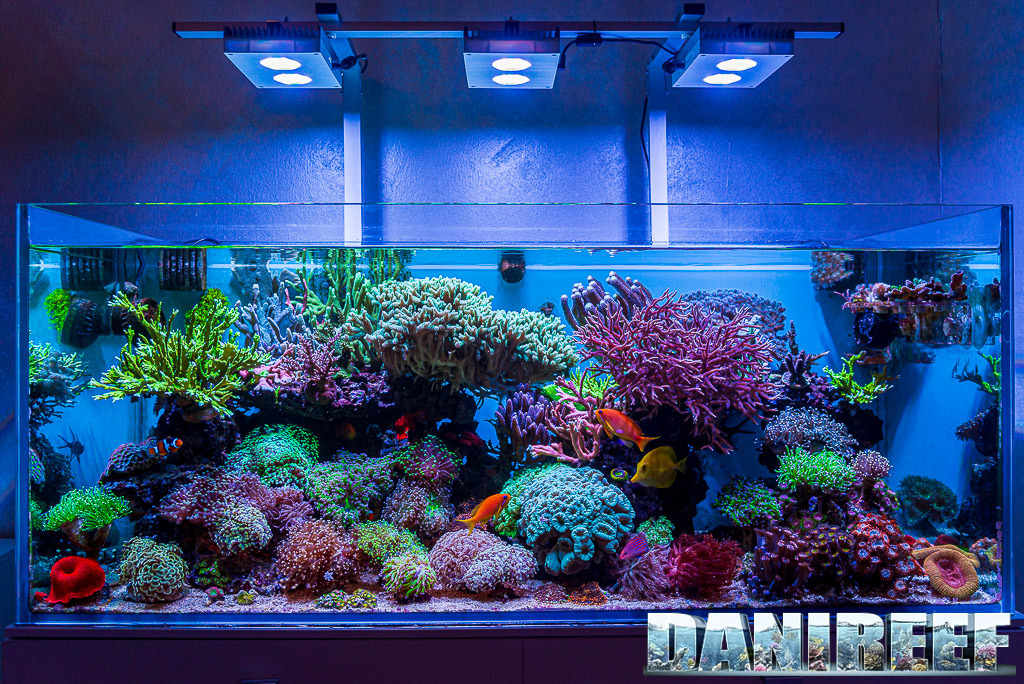
The skimmer is a classic Deltec SC1455, no longer in production, but it does its job very well. We are talking about a skimmer that processes 600 l/h of air, and has an 11-watt pump. And Deltec recommended it for aquariums up to 800 liters. So a perfectly fitting choice for Andrea Minnella‘s 300-liter marine aquarium.
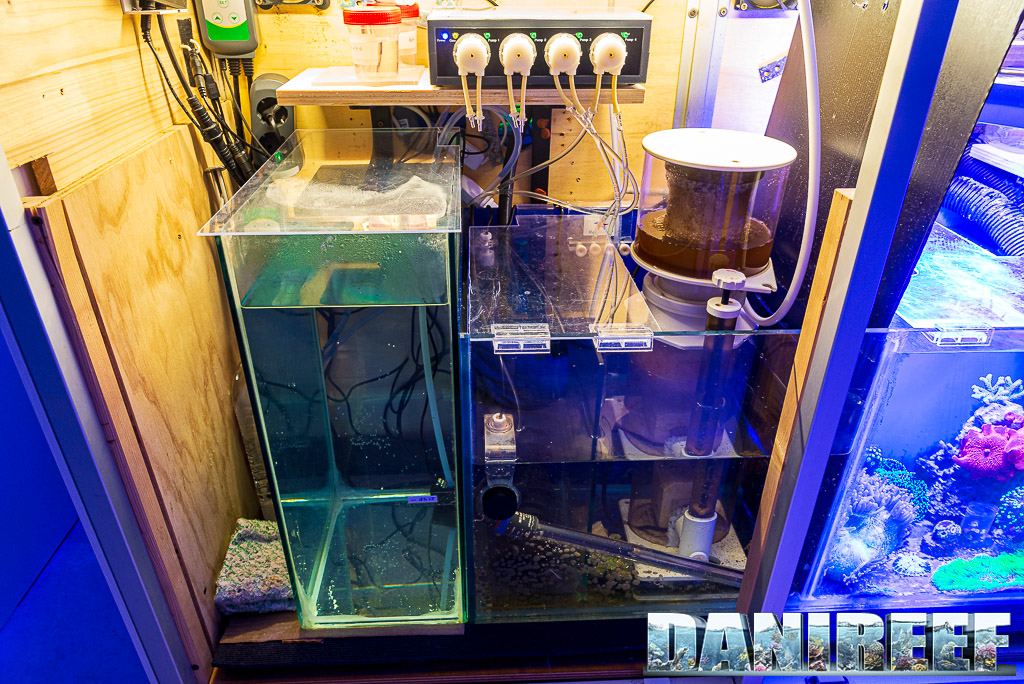
From a technical point of view, besides topping up and the necessary 300-watt Eheim heater, there is nothing else.
The pump compartment… rising and movement
The rising pump is a Jebao DCP 3000. A 3000 l/h flow rate pump, as the name implies, a head of 3 meters for a consumption of 25 watts.
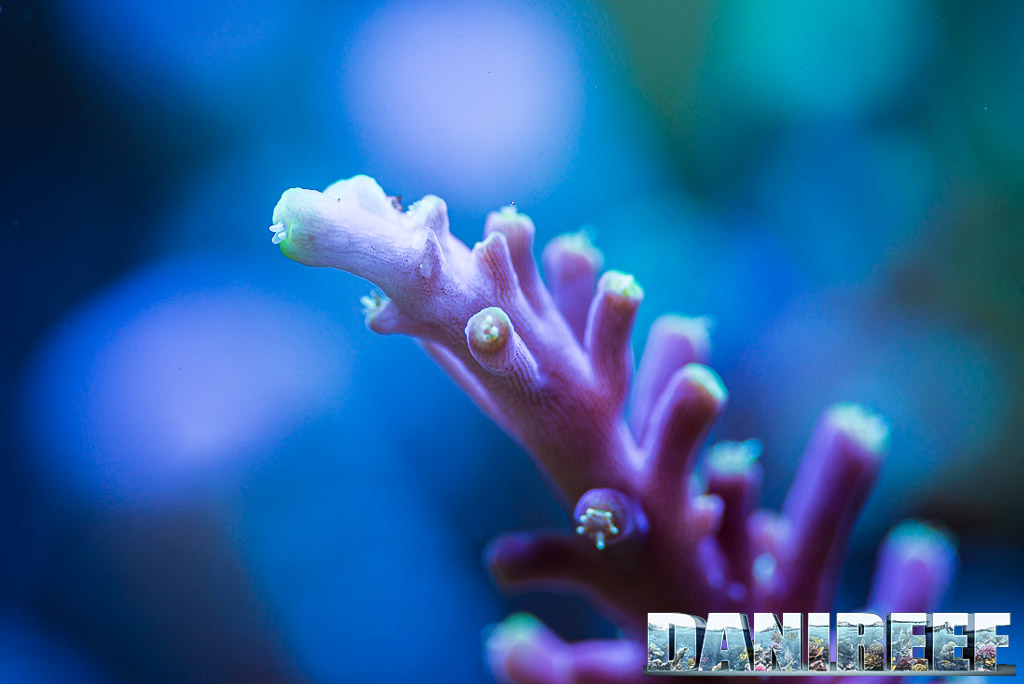
The pump, if we dwell on the technical data alone, may well be adequate for the aquarium. We immediately notice that there is something wrong with it, and in fact our measurement shows us a merciless 282 l/h so much so that Andrea tells us how he is ready to change it to something much more powerful. We cannot help but notice that 282 l/h is practically half of what the skimmer processes.

Movement is handled by a pair of Jebao slw20, pumps claimed to have a flow rate of 10,000 l/h, set at 90% and using them alternately. Since the aquarium is 300 liters, we therefore get a flow rate of 9,000/300 equal to 30 times the volume of the aquarium. Exactly a textbook ratio!
Balling ATI Pro for triad stabilization
Andrea tells us about using ATI Pro balling to manage calcium, kh and magnesium. Using a Jebao metering pump and dosing 40 ml per day.
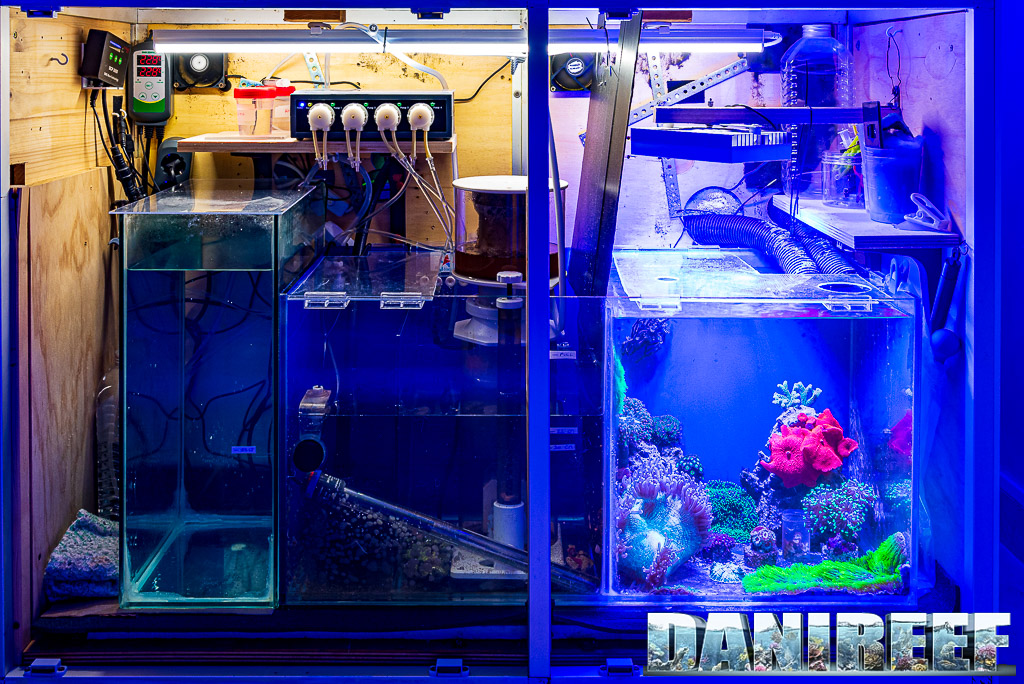
Balling was implemented in the aquarium after about 8 months of tank life. Biologically, we find about 30 kg of dead Fiji rock from another tank. On the bottom we find instead a sandy layer of ATI Fiji White Sand.
Speaking of lighting
Light for corals is the basis of their life. It also takes a lot of other things, but light is not to be missed. In this case, Andrea opted for a set of AquaIllumination Hydra 26HD, as many as three on the aquarium and a fourth in a plain version, Hydra 26, on the refugium.

As our usual, we measured PARs in the aquarium, so as to get an idea of what you can achieve with those ceiling lights, but also of the illuminating power-color ratio of the corals. The values are about 300 μmol m-2 s-1 at the top of the reef, that is, at the top of the tallest corals, to 120-165 μmol m-2 s-1 on the Euphyllia and 70 μmol m-2 s-1 on the Zoanthus.
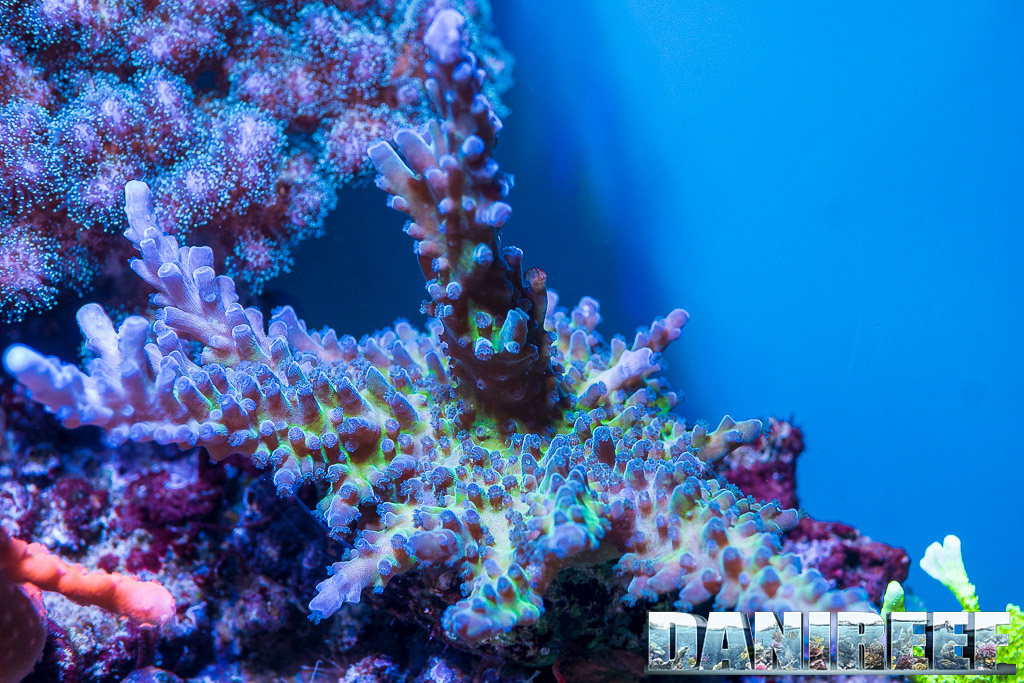
Interestingly, on a top Acropora we measure 280 μmol m-2 s-1 on one side and 200 μmol m-2 s-1 on the other. To the naked eye there appears to be the same amount of light, but the Acropora shows as many as two distinct colorations. This is to say that although there is a difference of almost 30 percent, our eye does not feel it, whereas for coral it makes a world of difference. The Acropora is the one seen above in the video you can see the difference in coloration at minute 5:57.
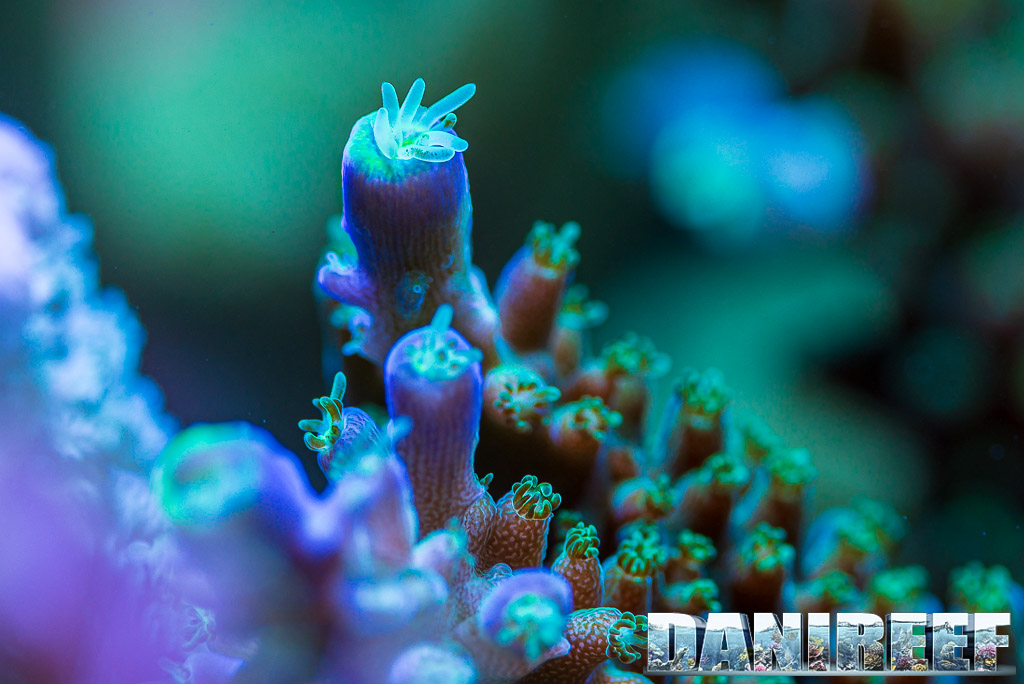
The strange choice of water changes
Osmosis water is produced independently with a 5-stage Forwater plant. Salt water is produced using alternately two different types of salt, either Red Sea Blue or Tropic Marin. The strange thing, or at least strange to me, is that Andrea does not do water changes except when she sees a problem.
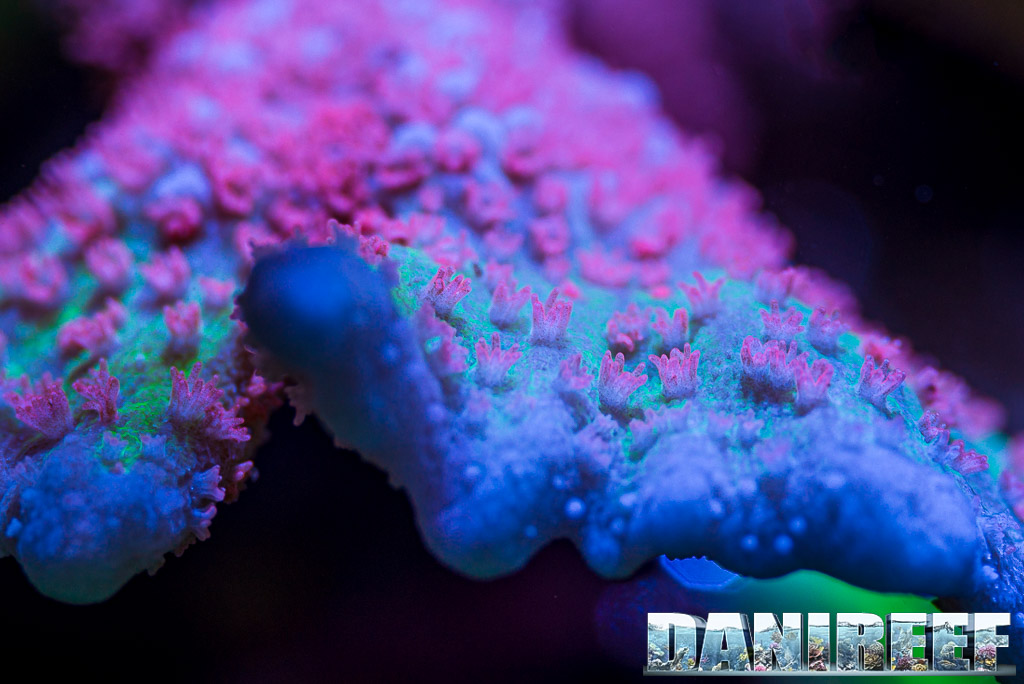
Then again, if there are no problems in the aquarium, hard to argue with that. This simplifies management and cuts some costs.
The aquarium, since its start, has never had any problems related to pollutants, after the initial maturation period phosphates have stabilized around the values of 0.05/0.07 ppm and nitrates hardly rise above 2 mgl.
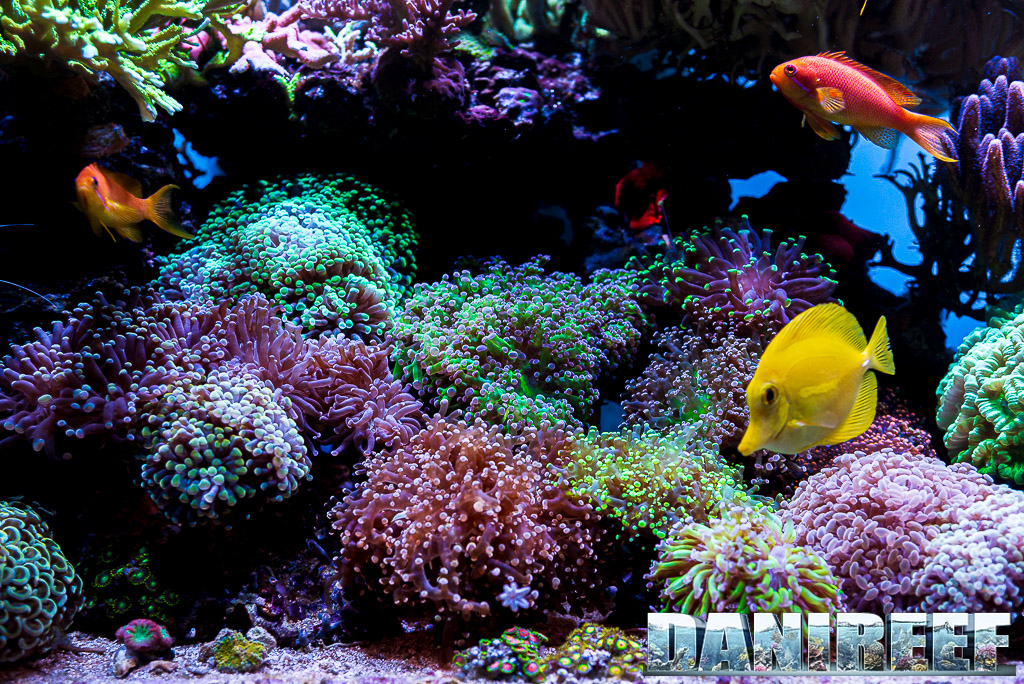
The winter minimum temperature is 22.8°C to try to spend as little as possible on electricity because of the well-known problems we all know about.
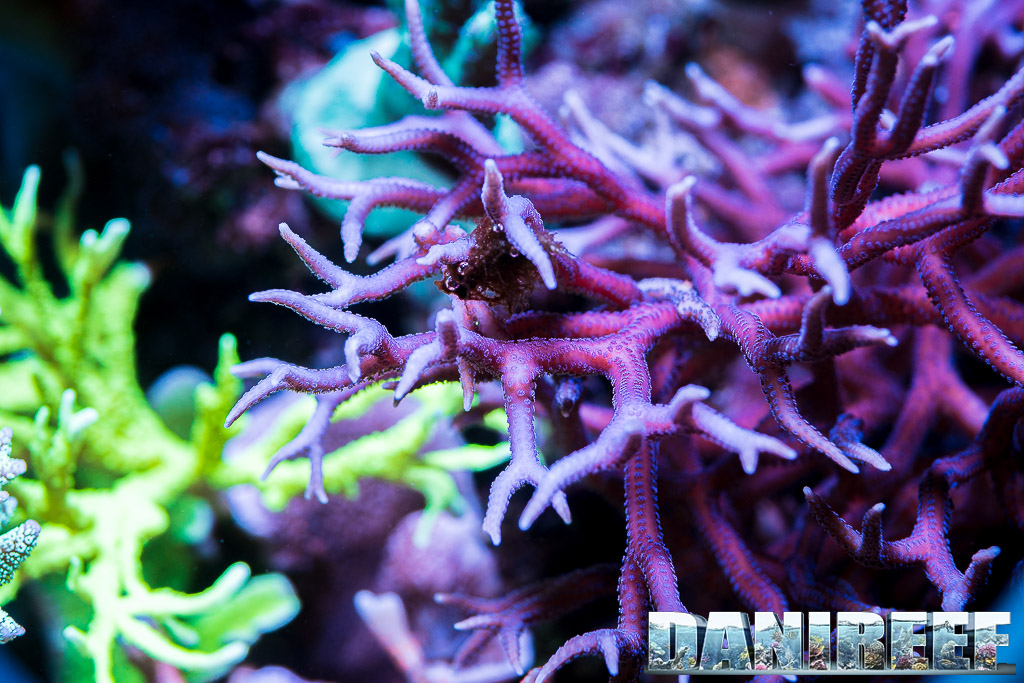
Andrea Minnella is not used to feeding corals consistently. Once in a while she gives amino acids and vitamins, and always once in a while some powdered food.
Datas of the aquarium
We cannot close our article without talking about the values that Andrea Minnella maintains in the aquarium. Indeed, Andrea points out to us that from the beginning he has been maniacal in monitoring the values, with measurements initially every week. Stability was always the goal for Andrea. So as soon as there was a value out of scale he would act to take immediate action without wasting time.
| Carbonates – KH | 7-8 dKH |
| Calcium | 400-420 ppm |
| Magnesium | 1.300-1.350 ppm |
| Nitrates | 0,5 – 1 ppm |
| Phosfates | 0,03 – 0,05 ppm |
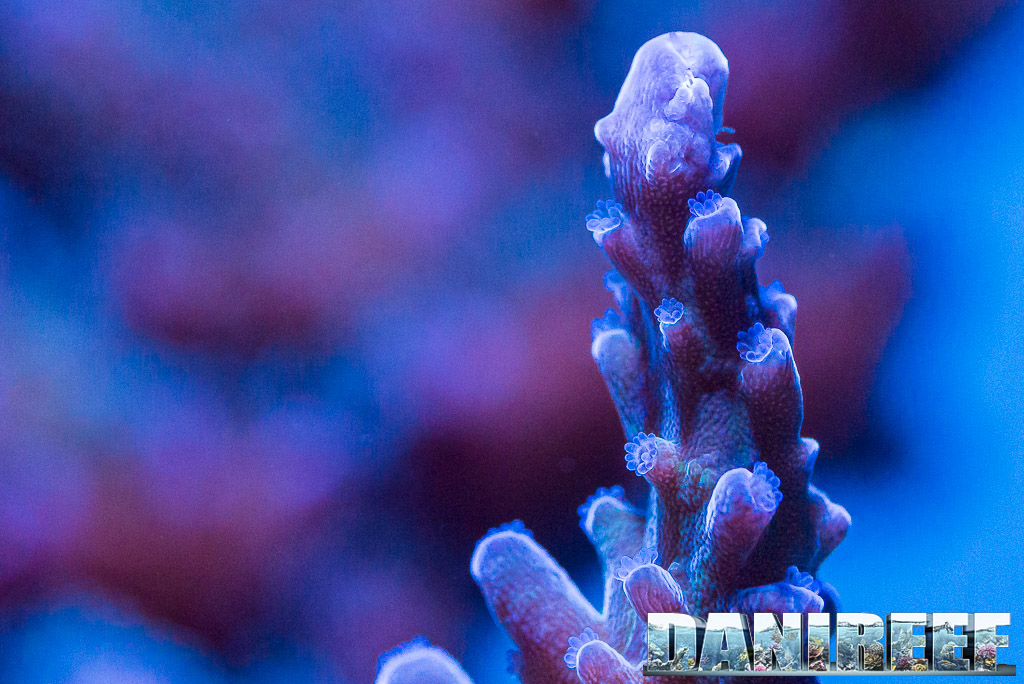
13 fish only!
The fish housed in the aquarium are, from my point of view, only 13. There is one Zebrasoma flavescens, one Zebrasoma xanthurum, 3 Amphiprion ocellaris, 3 Pseudanthias squamipinnis, 2 Pterapogon kauderni and one Pseudocheilinus exatenia.
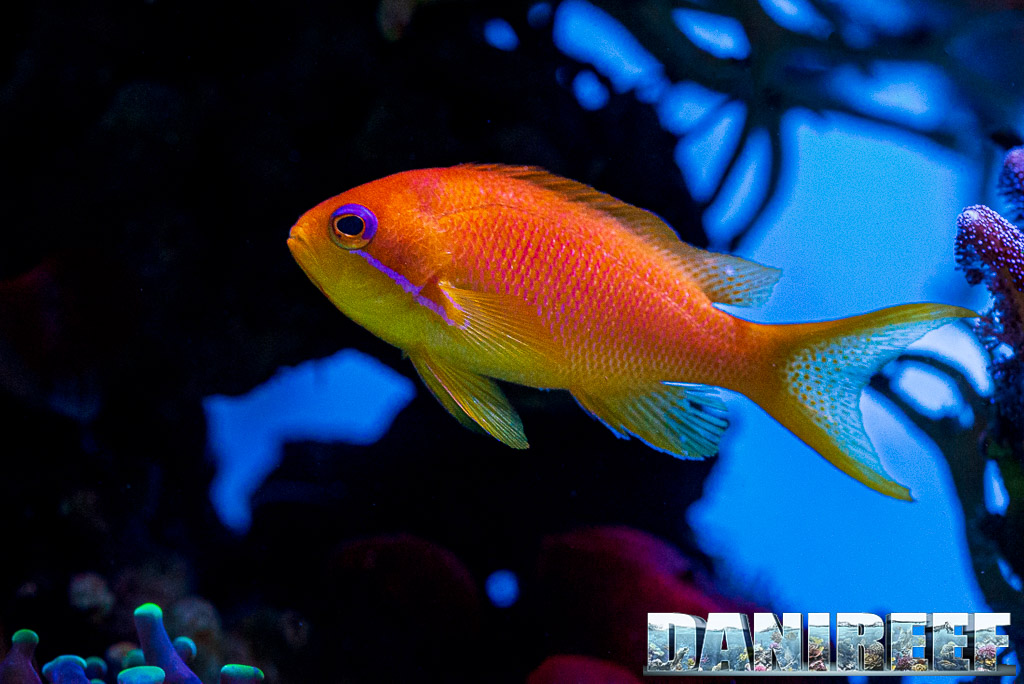
And let’s not forget the Lysmata amboinensis.
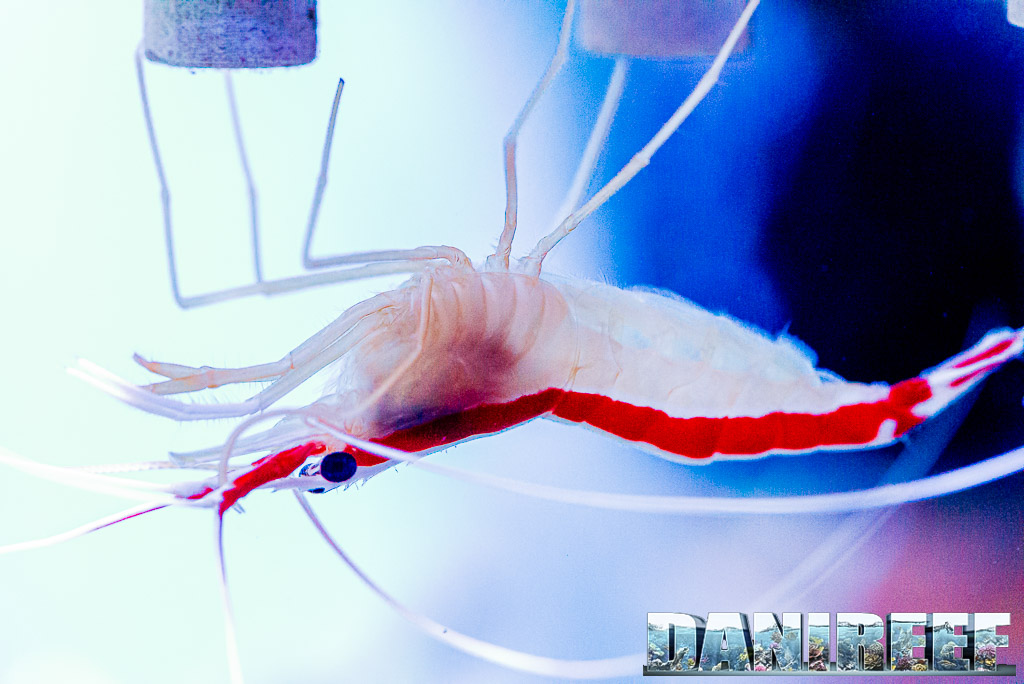
DaniReef’s review
Andrea Minnella‘s aquarium is spectacular. And it is so for so many reasons. The Euphyllia garden is mesmerizing to look at. And the harmony that emanates from this aquarium is absolutely palpable. The corals then are fantastic, beautiful colors and growths. Everything is taken care of down to the smallest detail. Beautiful beautiful.
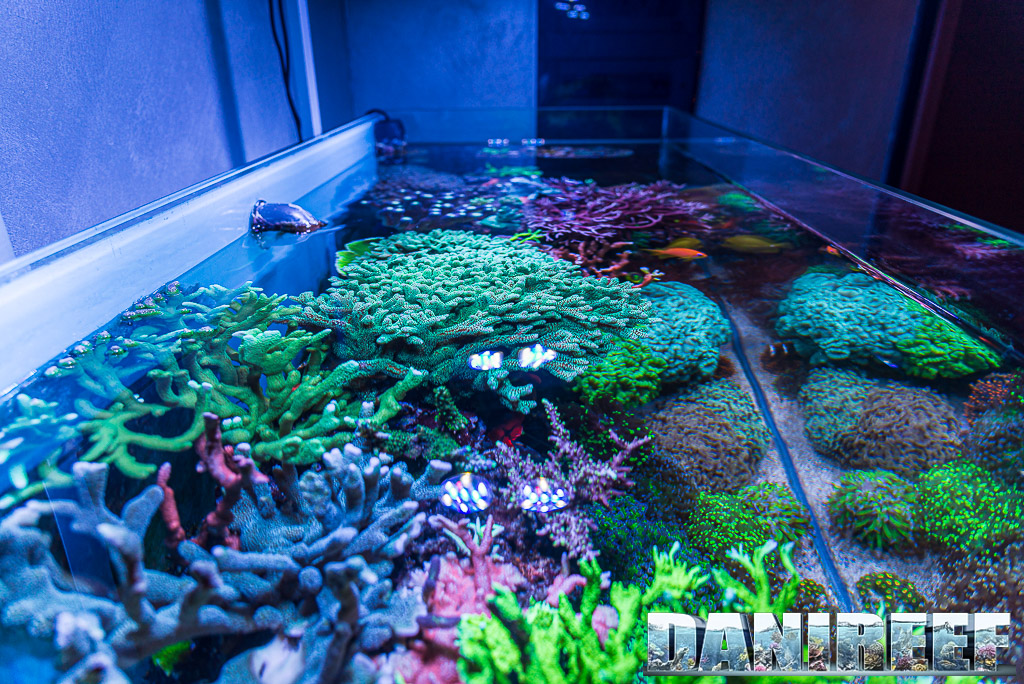
The first thing that we thought was jarring was the flow rate of the lift pump. Absolutely not adequate for skimmer treatment. But in accordance with what we wrote in this article How to save electric power in marine aquarium: the return pipe, we advised Andrea to change his pipe, which was very narrow. In the days following our visit, Andrea changed the pipe to a one-inch pipe (diameter 2.54 cm) and changed a few fittings to avoid decreases in flow rate (for more information read this article: calculating the return pump flow rate automatically: enter the data and find out the flow rate). This led from a previous situation with the pump at 100% and flow rate of 282 l/h, to keeping the pump at 40% with flow rate close to 900 l/h and as much as 1 cm more water in the aquarium. Remarkable don’t you think?
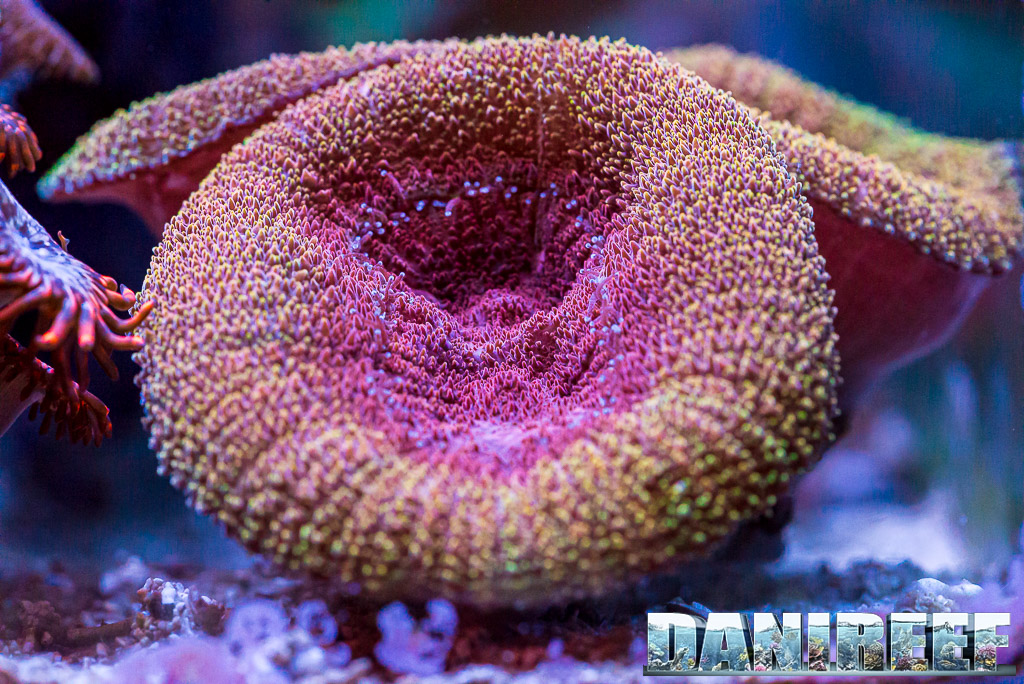
Another piece of advice we felt to give Andrea was to increase, as much as possible, the lighting rates of the Hydra 26HDs. This is because, on the one hand, the values measured especially at the top were not very high, as the Acropora we mentioned teaches, but also because the SPSs expanded at the top leaving little light filtering through to the corals below. By increasing, as much as possible, the values, it is possible that the whole tank will benefit.
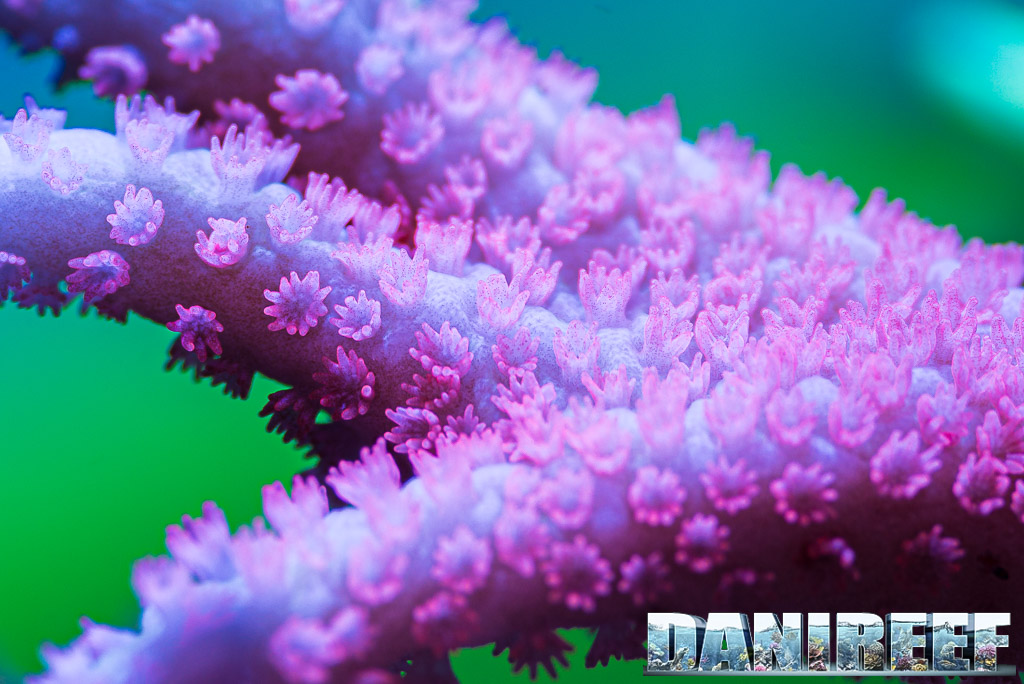
Another point I would like to make is about coral feeding. Contrary to what was believed until the early 2000s, corals are animals and must be fed. This is needed not only to make sure that they show their full potential, but also to prevent them from experiencing deficiencies that can become irremediable after a few years.
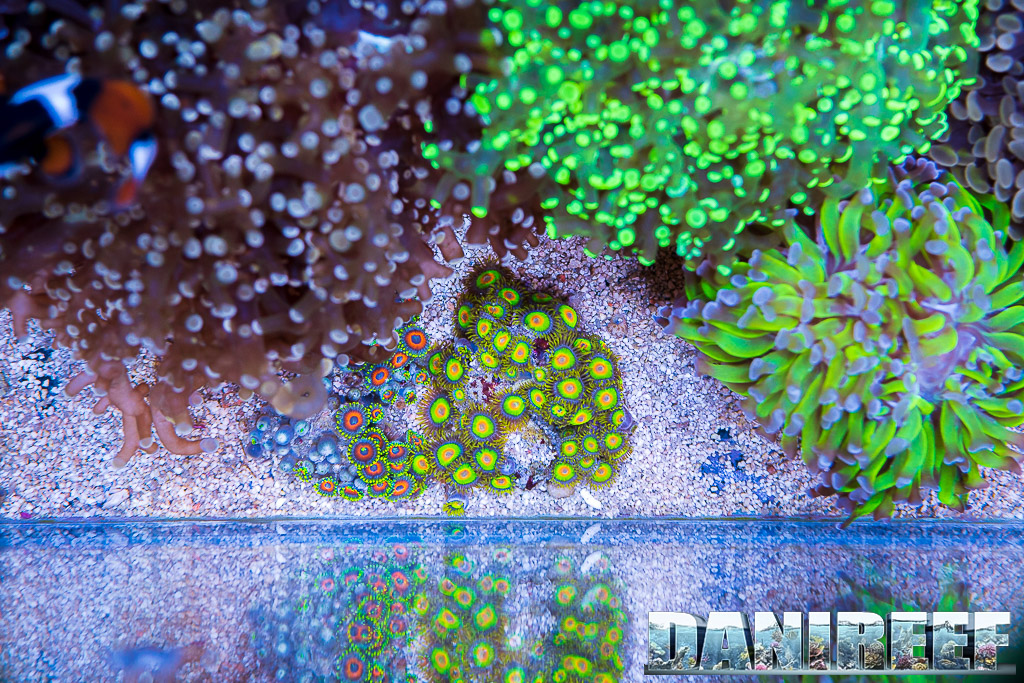
So far, all of the advice we talked about during our interview. And all somewhat followed by Andrea, with very good feedback in the aquarium, as far as we know. Only one remains to be given. In 300 liters I would increase the number of fish that are there, but also by double and more. A coral aquarium is wonderful, but it is even more beautiful when such a colorful background meets so many fish.
But we repeat ourselves, the aquarium is beyond wonderful. An aquarium and a technique to take a cue from. Really kudos for this corner of the Reef that we were lucky enough to have been able to capture.
Matteo Fusco’s point of view
On this visit there were two of us, it was me and Matteo Fusco, aka MattReefer, who let us have his perspective on this wonderful aquarium. It was a real thrill to be able to accompany Danilo on an interview and especially to a friend. I had never seen Andrea Minnella’s tank live despite knowing each other on various groups.
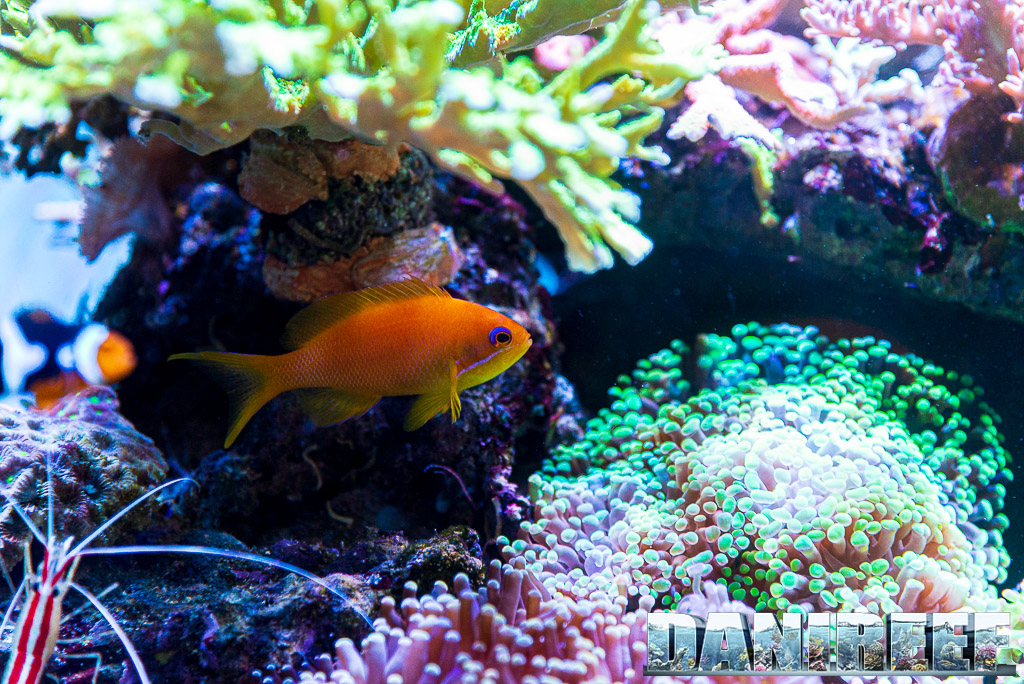
I have to say that since I met Andrea, somehow I started to appreciate SPS corals more. Not that I didn’t like them before, but out of pure personal taste I have always been attracted mainly to LPS hard corals.
However in this riot of corals is impossible not to appreciate the context, which is created by the whole, so it is impossible not to appreciate the colors, and the beautiful corner of reef that Andrea has created over time. Really congratulations man. I will continue to be inspired by this beautiful tank of yours!
On page 2 you can see all the photos we took of the aquarium, sump, fish and corals in this wonderful reef marine aquarium based mostly on Euphyllia.







